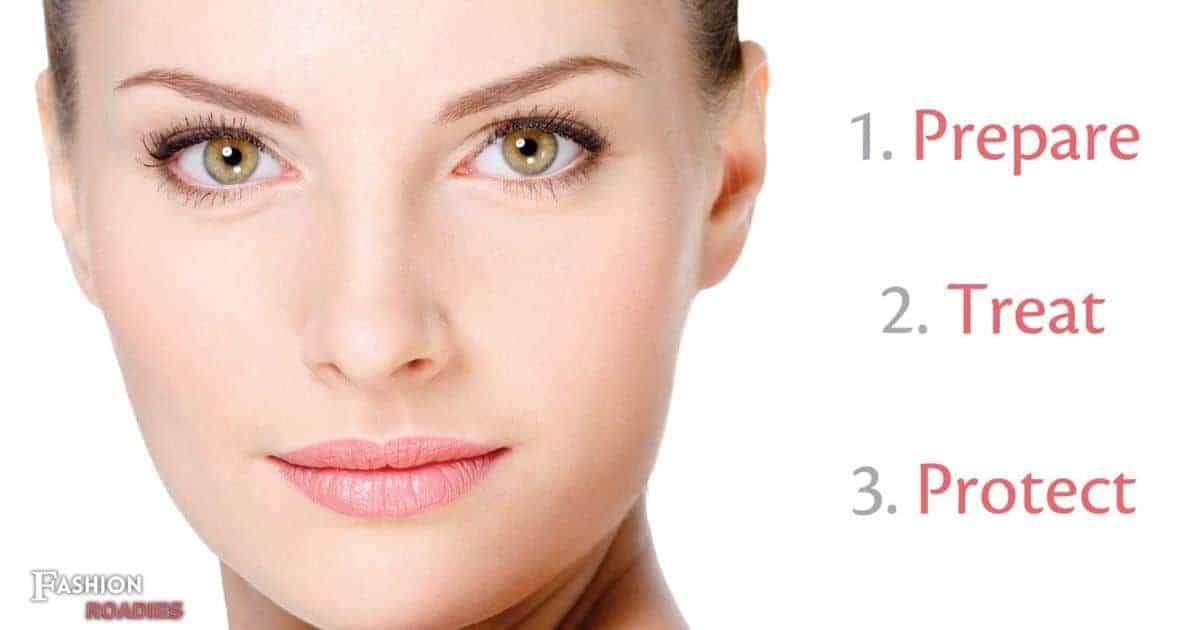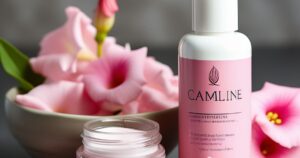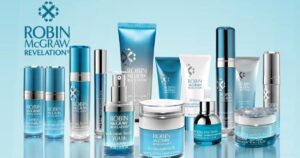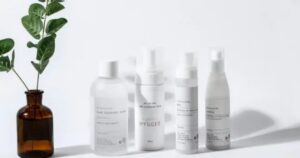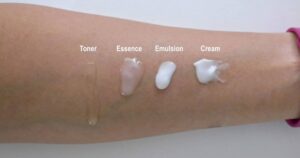Unlock the secret to radiant, healthy skin with the art of layering your skincare routine. Like building a fortress, each layer fortifies your skin’s defenses, creating a harmonious symphony of protection and nourishment. This guide will delve into the fundamentals of layering, from the crucial first step of cleansing to the final touch of sunscreen. With evidence-based techniques and expert insights, you’ll discover how to achieve a flawless complexion that reflects both confidence and belonging.
Key Takeaways
- Layering is essential for optimal results in a skincare routine.
- Choosing the right cleanser for your skin type is crucial.
- Toning removes remaining dirt, oil, or makeup and balances the skin’s pH levels.
- Sunscreen is important for protecting the skin from harmful UV rays and enhancing the overall effectiveness of the skincare routine.
Understanding the Basics of Layering
In order to achieve optimal results from your skincare routine, it is essential to have a comprehensive understanding of the basics of layering, ensuring that each product is applied in a strategic and effective manner. The first step in this process is to cleanse your skin thoroughly using appropriate cleansing techniques. This helps to remove dirt, oil, and impurities, creating a clean canvas for the subsequent products. Selecting serums is the next crucial step. Serums are lightweight, highly concentrated products that deliver active ingredients deep into the skin. It is important to choose serums that address your specific skin concerns, such as hydration, brightening, or anti-aging. By layering your skincare products in the correct order, you can maximize their effectiveness and achieve the desired results. Now, let’s dive deeper into the first step of effective layering: cleansing.
Cleansing: The First Step to Effective Layering
Cleansing is the crucial first step in an effective layering routine. Proper cleansing techniques ensure that the skin is free from dirt, oil, and impurities, creating a clean canvas for the subsequent layers of skincare products. Clean skin is essential for allowing the active ingredients in the following products to penetrate and work effectively. Additionally, choosing the right cleanser for your skin type is important to maintain the skin’s natural balance and prevent stripping or irritation.
Proper Cleansing Techniques
To achieve optimal results in your skincare routine, it is important to incorporate proper techniques that effectively cleanse the skin before layering products. Cleansing is the first step in any skincare regimen, as it removes dirt, oil, and impurities from the skin’s surface, allowing other products to penetrate more effectively. When it comes to cleansing techniques, there are a few key points to keep in mind. Firstly, it is important to choose the right cleanser for your skin type. Whether you have oily, dry, or combination skin, finding a cleanser that suits your specific needs is essential. Secondly, proper cleansing methods involve gently massaging the cleanser onto the skin in circular motions, avoiding harsh scrubbing that can strip away the skin’s natural protective oils. Lastly, it is crucial to rinse thoroughly with lukewarm water to remove all traces of cleanser from the skin. By following these proper cleansing techniques, you can ensure a clean canvas for the rest of your skincare routine, allowing your products to work their magic more effectively.
Importance of Clean Skin
Achieving optimal results in a skincare routine requires clean skin and effective layering techniques, as they allow products to penetrate more deeply and deliver their intended benefits. Clean skin is essential because it removes dirt, oil, and impurities that can clog pores and hinder product absorption. Clean skin benefits include improved product efficacy, reduced risk of breakouts, and enhanced overall skin health. When layering skincare products, it’s important to consider the consistency and compatibility of each product to ensure they work synergistically. Start with lightweight products and gradually move towards thicker ones, allowing each layer to fully absorb before applying the next. This technique ensures that the active ingredients in each product can penetrate deeply into the skin and work effectively. By maintaining clean skin and implementing effective layering techniques, individuals can maximize the benefits of their skincare routine and achieve healthier, more radiant skin.
Choosing the Right Cleanser
The selection of an appropriate cleanser is crucial for establishing a solid foundation in one’s skincare routine. With so many cleanser types available on the market, it can be overwhelming to choose the right formula. However, understanding your skin type and concerns can help you make an informed decision. For those with oily or acne-prone skin, a gel or foam cleanser containing salicylic acid or benzoyl peroxide can be beneficial in controlling oil and preventing breakouts. Dry or sensitive skin types may benefit from a creamy or oil-based cleanser that provides hydration and soothes irritation. It’s important to avoid harsh ingredients like sulfates or fragrances, as they can strip the skin of its natural oils and cause further irritation. Overall, choosing the right cleanser for your skin type and concerns is essential for maintaining a healthy complexion and ensuring the effectiveness of your skincare routine.
Toning: Preparing Your Skin for Next Steps
Toning is an essential step in preparing your skin for the next steps in your skincare routine. It helps to remove any remaining dirt, oil, or makeup that may be left on the skin after cleansing. Additionally, toning helps to balance the skin’s pH levels, tighten pores, and improve the overall texture and appearance of the skin.
Importance of Toning
Including an appropriate toner in your skincare routine can significantly enhance the effectiveness of subsequent products. Toning is a crucial step that provides numerous benefits for all skin types. Here are four reasons why incorporating toning into your skincare routine is essential:
- Balancing pH levels: Toners help restore the skin’s natural pH balance, which can be disrupted by cleansing products. This ensures that your skin is in an optimal state for better absorption of serums and moisturizers.
- Hydration boost: Toners often contain humectant ingredients that help retain moisture in the skin. This extra hydration not only plumps up the skin but also helps reduce the appearance of fine lines and wrinkles.
- Cleansing residual impurities: Toners can effectively remove any leftover dirt, oil, or makeup that your cleanser may have missed, leaving your skin clean and refreshed.
- Preparing for active ingredients: Toners act as a primer for other skincare products, allowing them to penetrate deeper into the skin. This maximizes the benefits of active ingredients such as antioxidants, vitamins, and peptides.
Toning Techniques Explained
Utilizing proper application techniques can optimize the benefits of toning, ensuring that your skin is properly prepared for the subsequent steps in your skincare routine. Toning helps to balance the pH level of your skin, remove any remaining impurities, and prepare your skin for better absorption of serums and moisturizers. However, to truly reap the benefits of toning, it is important to apply it correctly. Here are some effective toning techniques to incorporate into your skincare routine:
| Technique | Description |
|---|---|
| Patting | Gently pat the toner onto your skin using your fingertips, allowing it to absorb without rubbing. |
| Spritzing | Use a toner mist and spray it evenly over your face, keeping a distance of about 8-12 inches. |
| Cotton Pad | Apply toner to a cotton pad and swipe it across your face and neck, focusing on problem areas. |
| Press and Hold | Pour a small amount of toner onto your palms, then press and hold your hands against your face. |
| Layering | Apply multiple thin layers of toner, allowing each layer to fully absorb before applying the next one. |
Remember to choose toning products that are suitable for your skin type and concerns. By following these techniques, you can optimize the benefits of toning and achieve healthier, more radiant skin.
Serums and Treatments: Targeting Specific Concerns
Effectively addressing specific skin concerns, serums and treatments allow for targeted solutions to improve the overall complexion. These powerful formulations are designed to penetrate deep into the skin, delivering active ingredients that address specific issues such as targeting aging and treating acne. Here are four examples of serums and treatments that can help you achieve your desired results:
- Anti-aging serum: Packed with antioxidants and peptides, this serum helps to reduce the appearance of fine lines and wrinkles, promoting a more youthful complexion.
- Acne treatment: Formulated with salicylic acid and tea tree oil, this treatment helps to unclog pores, reduce inflammation, and prevent future breakouts, leaving your skin clear and blemish-free.
- Brightening serum: Infused with vitamin C and niacinamide, this serum works to fade dark spots and hyperpigmentation, revealing a brighter and more even skin tone.
- Hydrating treatment: With hyaluronic acid and ceramides, this treatment replenishes moisture, improving skin texture and restoring a healthy, plump appearance.
Moisturizing: Hydrating and Sealing in the Goodness
To optimize the benefits of moisturizing, it is important to focus on both hydrating the skin and sealing in the goodness with the right products and techniques. Hydrating techniques involve replenishing the skin’s moisture levels and maintaining its natural barrier function. This can be achieved through the use of hydrating ingredients such as hyaluronic acid, glycerin, and ceramides. These ingredients attract and retain moisture in the skin, keeping it plump and hydrated.
In addition to hydrating techniques, using the right moisturizing products is crucial for sealing in the hydration and providing long-lasting nourishment. Look for moisturizers that contain occlusive ingredients like shea butter, petrolatum, or dimethicone. These ingredients create a protective barrier on the skin’s surface, preventing moisture loss and locking in the hydrating benefits.
When applying moisturizers, it is important to use gentle, upward motions to promote better absorption. Patting or tapping the product into the skin can also help in enhancing the penetration of the moisturizer. Additionally, applying moisturizers on slightly damp skin can aid in trapping moisture and maximizing hydration.
Sunscreen: The Essential Final Layer
Applying sunscreen is essential for protecting the skin from harmful UV rays, and it serves as the final touch in a comprehensive skincare routine. Here are four key reasons why sunscreen should be the last step in layer your skincare regimen:
- Shielding from UV rays: Sunscreen forms a protective barrier on the skin, preventing the penetration of harmful ultraviolet (UV) rays. This shields the skin from sunburn, premature aging, and skin cancer.
- Preventing photoaging: UV rays contribute to the breakdown of collagen and elastin, leading to wrinkles, fine lines, and sagging skin. By using sunscreen, you can help prevent these signs of aging and maintain a youthful appearance.
- Reducing hyperpigmentation: Sun exposure can trigger the production of excess melanin, resulting in dark spots and uneven skin tone. Regular application of sunscreen helps minimize the appearance of hyperpigmentation and promotes a more even complexion.
- Preserving skincare benefits: By acting as a protective barrier, sunscreen helps to maintain the efficacy of other skincare products you apply, ensuring that their active ingredients can work effectively.
Frequently Asked Questions
Can I Layer Multiple Serums and Treatments Together?
Yes, you can layer multiple serums and treatments together. Mixing serums allows for targeted skin benefits and enhanced results. Layering treatments can address various concerns simultaneously, providing a comprehensive approach to skincare.
Should I Use a Toner Before or After Cleansing?
When considering the use of a toner, it is important to understand its benefits and how it fits into your skincare routine. Before or after cleansing, toners provide hydration, balance pH levels, and can enhance the absorption of other skincare products. Alternatively, toner alternatives, such as micellar water, can be used.
Can I Skip Moisturizing if I Have Oily Skin?
Skipping moisturizing for oily skin may seem tempting, but it is not recommended. Moisturizing helps balance oil production, hydrates the skin, and prevents dehydration, which can actually lead to increased oiliness.
Is It Necessary to Use Sunscreen if I’m Indoors All Day?
It is important to use sunscreen even when indoors as it provides protection against harmful UV rays that can penetrate through windows. Sunscreen helps prevent premature aging, skin damage, and reduces the risk of skin cancer.
How Long Should I Wait Between Applying Each Layer of Skincare Product?
To maximize the effectiveness of skincare layers, it is crucial to allow each layer to fully absorb before applying the next. This ensures proper delivery of active ingredients and prevents product interference.
Conclusion
In conclusion, layering your skincare routine is an effective way to address specific concerns and achieve optimal results. By understanding the basics of layering, starting with cleansing and toning, then applying serums and treatments, moisturizing, and finally, applying sunscreen, you can ensure that your skin receives the necessary ingredients and protection it needs. Remember, layering is like building a strong foundation for your skin, allowing it to flourish and stay healthy in the long run. So, embrace the power of layering and let your skin shine like a radiant star!

